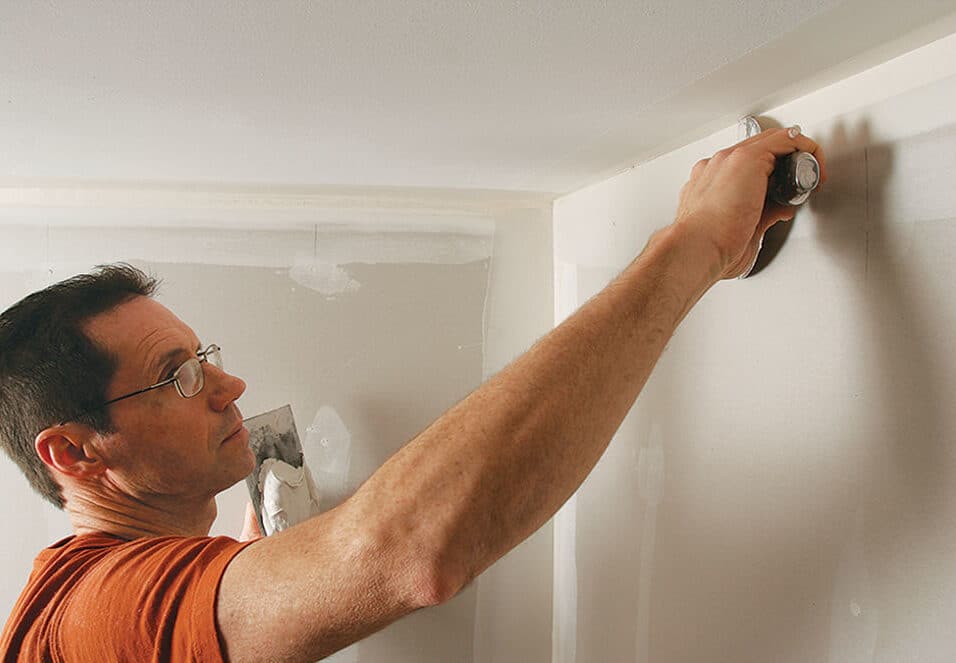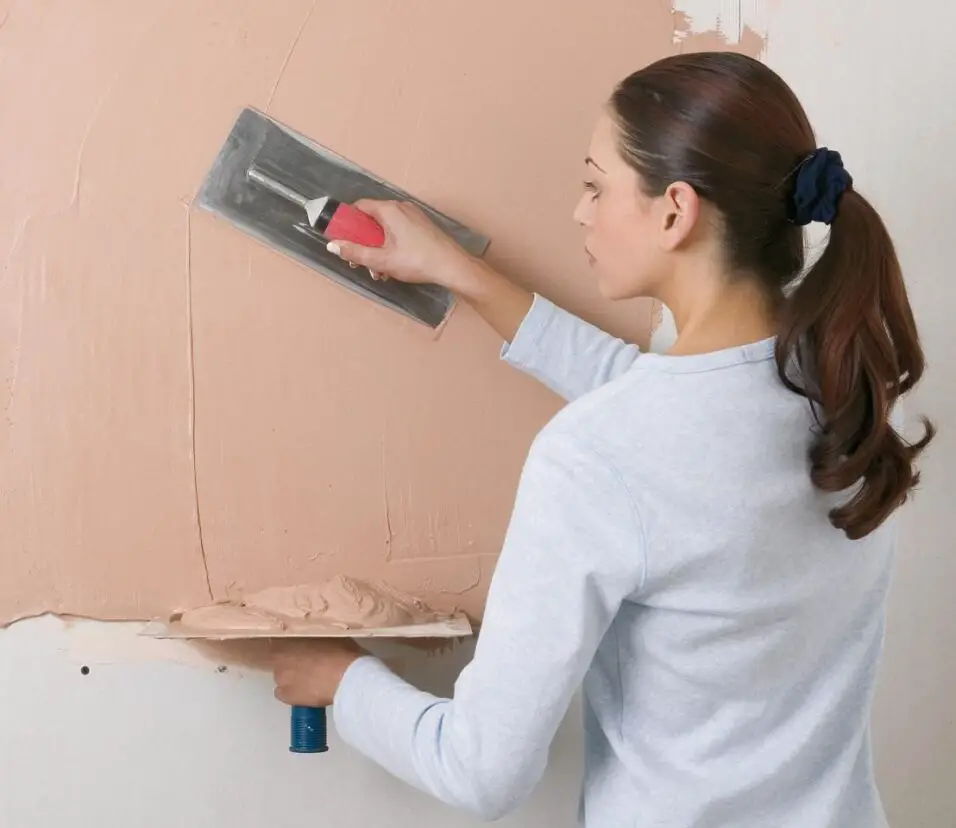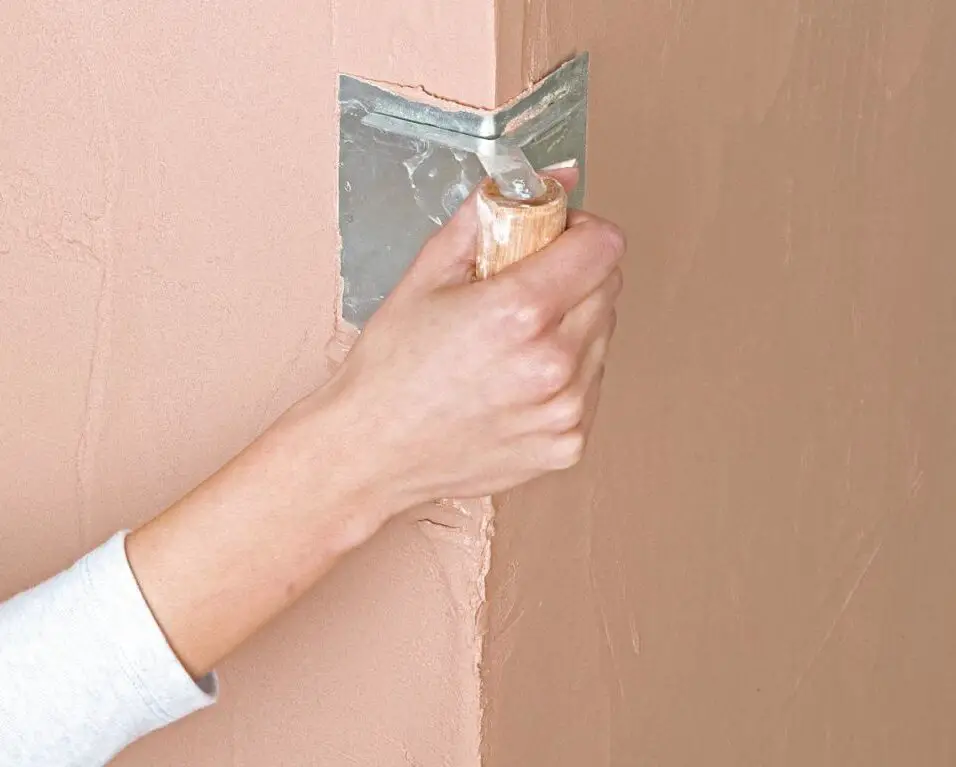How To Cut Plastic Wall Panels
Introduction
How To Cut Plastic Wall Panels: Cutting plastic wall panels is a fundamental skill for anyone embarking on a DIY home improvement project. Whether you’re renovating a bathroom, kitchen, or any room in your home, knowing how to accurately and safely cut plastic wall panels is essential for achieving a professional finish. Plastic wall panels, known for their durability, water resistance, and ease of maintenance, have become a popular choice in modern interior design.
In our comprehensive guide on “How To Cut Plastic Wall Panels,” we will take you through the essential steps, techniques, and tools required to cut plastic panels with precision and confidence. You’ll learn about the various types of plastic wall panels, such as PVC, acrylic, or polycarbonate, and understand the unique considerations for each material.
Whether you’re planning to install these panels as backsplashes, shower enclosures, or decorative elements, we’ll provide you with invaluable tips to make your project a success. Safety precautions, suitable tools, and step-by-step instructions will empower you to tackle cutting plastic wall panels with ease, ensuring a seamless fit and a polished look for your walls.
Let’s embark on this DIY journey and equip you with the knowledge and skills to transform your living spaces with the elegance and functionality of plastic wall panels.

How do you cut PVC wall boards?
If you’re wondering how to cut bathroom wall panels, the good news is that it’s quick and easy to DIY at home. All you’ll need is a fine-toothed hand saw or jigsaw, as our PVC panels are flexible enough to cut by hand.
Cutting PVC wall boards requires precision and the right tools. Here’s a step-by-step guide:
Gather Materials and Safety Gear: You’ll need PVC wall boards, a pencil or marker, a straightedge or T-square, a circular saw with a fine-toothed blade or a jigsaw, clamps, and safety gear like safety glasses and a dust mask.
Measure and Mark: Measure the area where you need to cut the PVC wall board and mark the cut line with a pencil or marker. Use a straightedge or T-square to ensure straight lines.
Secure the Board: Place the PVC wall board on a stable surface, such as a workbench or sawhorses. Clamp the board in place to prevent it from moving during cutting.
Choose the Right Blade: If using a circular saw, select a fine-toothed blade with a high tooth count. This helps minimize chipping and splintering.
Cutting Technique:
- For a Circular Saw: Align the saw blade with the marked cut line and slowly push the saw forward, following the line. Keep a steady hand and maintain a consistent speed to achieve a clean cut.
- For a Jigsaw: Insert the appropriate blade for cutting plastic. Start the jigsaw, align the blade with the cut line, and slowly guide it along the line. Be sure to support the board to prevent it from bending or vibrating excessively during cutting.
Reduce Friction: To minimize friction and heat buildup while cutting, you can apply a lubricant like paraffin wax or silicone spray to the blade.
Safety Precautions: Wear safety glasses and a dust mask to protect your eyes and respiratory system from dust and debris generated during cutting.
Sand and Smooth: After cutting, you may notice rough edges or burrs. Use sandpaper or a file to smooth and deburr the cut edges for a clean finish.
How do you cut PVC wall tiles?
Cutting a PVC Wall Panel – Fine Toothed Saw
If using a fine toothed saw (uPVC Predator Saw is ideal) always cut with the decorative face up. Using a saw gives you good control of the cut but we would recommend cutting slowly to give you a clean edge.
Cutting PVC wall tiles follows a similar process to cutting PVC wall boards:
- Materials and Safety Gear: Gather PVC wall tiles, a pencil or marker, a straightedge or T-square, a utility knife or PVC cutter, clamps, and safety gear like safety glasses and gloves.
- Measure and Mark: Measure and mark the tiles where you need to make cuts. Use a pencil or marker and a straightedge for accuracy.
- Secure the Tile: Place the PVC wall tile on a stable surface, such as a workbench, and clamp it securely to prevent movement during cutting.
- Choose the Cutting Tool: You can use a utility knife with a sharp blade or a specialized PVC cutter designed for precision cutting of plastic materials.
- Cutting Technique:
- For a Utility Knife: Align the knife blade with the marked cut line and score the tile by making multiple passes with firm pressure. Once the tile is sufficiently scored, carefully bend it along the scored line to snap it cleanly. Use sandpaper to smooth any rough edges.
- For a PVC Cutter: Position the cutter jaws over the marked cut line and apply even pressure to the handles to make the cut. PVC cutters provide a clean and precise cut with minimal effort.
- Safety Precautions: Always wear safety glasses and gloves when cutting PVC tiles to protect against flying debris and sharp edges.
- Smooth Edges: After cutting, use sandpaper or a deburring tool to smooth any rough edges or burrs.
What is the safest way to cut plastic?
A utility knife is the best option because it provides a good grip and control. A utility knife works in a similar way to scoring glass. It creates a shallow cut in the plastic, which makes it easy to either break the plastic or cut through completely.
The safest way to cut plastic, whether it’s PVC, acrylic, or another type of plastic material, involves the following precautions:
Wear Safety Gear:
Always wear appropriate safety gear, including safety glasses or goggles to protect your eyes from debris, and a dust mask or respirator to prevent inhalation of dust particles.
Choose the Right Tool:
Select the correct cutting tool for the type and thickness of plastic you’re working with. For PVC and most plastics, circular saws, jigsaws, utility knives, or specialized PVC cutters are common choices.
Secure the Material:
Secure the plastic material firmly in place to prevent it from moving or vibrating during cutting. Use clamps or a stable work surface.
Mark the Cut Line:
Measure and mark the cut line with a pencil or marker. Use a straightedge or T-square to ensure straight cuts.
Cutting Technique:
When using a power tool like a circular saw or jigsaw, use a fine-toothed blade designed for cutting plastic. Maintain a steady hand and feed the material at a consistent rate to prevent overheating and melting of the plastic.
Reduce Friction:
To minimize friction and heat buildup during cutting, consider applying a lubricant like paraffin wax or silicone spray to the blade.
Control Dust:
Work in a well-ventilated area to dissipate dust and fumes. If working indoors, use dust extraction equipment or wear a dust mask.
Smooth Edges:
After cutting, use sandpaper or a file to smooth and deburr the cut edges to prevent sharp or jagged edges.
Dispose of Scraps Properly:
Dispose of plastic scraps safely and according to local regulations. Recycling may be an option depending on the type of plastic.
Follow Manufacturer Guidelines:
Follow any manufacturer guidelines or recommendations for cutting specific plastic materials, as techniques may vary depending on the material’s properties.
By following these safety precautions and using the appropriate tools and techniques, you can cut plastic materials safely and effectively for your DIY projects.
What is the best tool to cut PVC panels?
PVC, which stands for “polyvinyl chloride” comes in many shapes, sizes, and thicknesses. It’s used to make piping, roofing, electric wire insulation, and even clothing. Many people will use an ordinary hand saw to cut PVC, which is fine if the PVC is very thin, but the best way to cut PVC sheets is with a circular saw.
The best tool to cut PVC panels depends on the type of cut you need and your preferences. Here are some common tools for cutting PVC panels:
Circular Saw:
A circular saw with a fine-toothed blade designed for cutting plastic is a versatile choice for making straight cuts in PVC panels. It provides speed and precision.
Jigsaw:
A jigsaw equipped with a blade designed for plastic can make curved or intricate cuts in PVC panels. It allows for greater maneuverability.
Utility Knife:
A utility knife with a sharp blade is suitable for making straight cuts in thinner PVC panels. Score the panel multiple times along the cut line, and then snap it along the scored line.
PVC Cutter:
A specialized PVC cutter is designed specifically for cutting PVC pipes and panels. It provides clean, precise cuts with minimal effort and is an excellent choice for straight cuts.
Table Saw:
If you have access to a table saw with a fine-toothed blade and the necessary safety features, it can be used to make straight cuts in PVC panels.
Dremel or Rotary Tool:
For detailed or intricate cuts, a Dremel or rotary tool with a cutting wheel attachment can be used. This tool is ideal for small-scale projects.
The choice of tool depends on the complexity of your cuts, the thickness of the PVC panels, and your comfort level with the tool. Always prioritize safety by wearing appropriate safety gear, securing the material, and working in a well-ventilated area. Additionally, selecting the right blade or cutter designed for cutting plastic is crucial for achieving clean and accurate cuts in PVC panels.
Is PVC plastic easy to cut?
PVC cuts extremely easy. Other materials take a long time to cut using standard hand tools. PVC, on the other hand, does not. This is because PVC only requires that, like metal, you cut the outside diameter of the pipe. PVC (Polyvinyl Chloride) plastic is relatively easy to cut, especially when compared to harder plastics like acrylic or polycarbonate.
For thinner PVC pipes or sheets, a utility knife or PVC cutter can be used with relative ease. These tools provide clean, straight cuts without the need for specialized machinery. However, for thicker or more rigid PVC, such as PVC boards or structural components, using a power tool like a circular saw or a jigsaw with a fine-toothed blade is often more efficient.
The key to successfully cutting PVC without issues like cracking or chipping is choosing the right tool for the job and ensuring that the cutting process is slow and controlled. Using sharp blades or cutters specifically designed for plastic helps minimize the chances of damaging the PVC during the cutting process. It’s also important to take safety precautions, wear appropriate safety gear, and work in a well-ventilated area, especially when using power tools.
How do you cut plastic so it doesn’t crack?
Cut through plastic with a fine-toothed saw.
Saw using the full length of the blade, and move the saw in smooth, quick back-and-forth motions through the material you’re cutting. Using a saw with fine, small teeth will allow you to cut through thick plastic precisely and without destroying the plastic itself.
Cutting plastic without causing cracking or damage requires the right tools, techniques, and precautions:
Select the Right Blade:
Choose a blade or cutting tool specifically designed for cutting plastic. Blades with fine teeth and special coatings for reduced friction work well.
Slow and Steady:
Avoid rushing the cutting process. Apply consistent, gentle pressure and maintain a slow and steady pace to prevent sudden forces that can cause cracking.
Support the Material:
Ensure the plastic is properly supported during cutting. Use a stable work surface and, if necessary, secure the material with clamps to minimize vibrations.
Reduce Friction:
To minimize heat and friction, consider using a lubricant like paraffin wax or silicone spray on the blade. This can help prevent the plastic from melting or cracking.
Pre-score:
For thicker plastics, pre-scoring or lightly marking the cut line with a knife can help guide the blade and reduce the chances of cracking.
Use the Right Tool:
Choose the appropriate cutting tool for the type and thickness of the plastic. For example, use a fine-toothed circular saw blade or a jigsaw with the correct settings.
Safety Gear:
Wear safety glasses or goggles to protect your eyes from any flying debris, and consider using a dust mask or respirator to avoid inhaling plastic dust.
Controlled Exit:
If using power tools, ensure that the plastic piece is fully supported on both sides of the cut. This prevents the plastic from falling or binding as the blade exits the material, reducing the risk of cracking.
Deburr the Edges:
After cutting, use sandpaper or a file to smooth any rough or sharp edges. This not only enhances the appearance but also reduces stress concentrations that can lead to cracking.
Remember that different types of plastic may have unique characteristics, so it’s important to adjust your cutting techniques accordingly. With the right tools, proper technique, and attention to detail, you can cut plastic materials without causing cracks or damage.
Can I cut PVC with a knife?
If you’re not using a plastic pipe cutter, you might want to do some work to smooth the edge of the pipe off any burrs and jagged edges left after the saw. The easiest way to do that is to just cut the edges off with a sharp utility knife.
Yes, you can cut PVC (Polyvinyl Chloride) with a knife, especially if you’re working with thinner PVC pipes or sheets. Here’s how to cut PVC using a knife:
Gather Materials:
You’ll need a utility knife with a sharp blade, a straightedge or T-square, a marker or pencil, and a work surface.
Mark the Cut Line:
Measure and mark the PVC along the line where you want to make the cut. Use a straightedge or T-square to ensure a straight and accurate line.
Score the PVC:
Place the straightedge along the marked line and use it as a guide for your utility knife. Apply firm, even pressure as you repeatedly score the PVC along the marked line. Make several passes, if needed, until the PVC is sufficiently scored.
Snap the PVC:
After scoring, carefully bend the PVC along the scored line. It should snap cleanly along the line, leaving you with a straight cut.
Smooth Edges:
Use sandpaper or a file to smooth any rough or jagged edges on the cut end of the PVC.
This method works well for thinner PVC pipes or sheets, and it provides a relatively clean and precise cut. However, for thicker or more rigid PVC, or if you need to make intricate cuts, using a power tool like a circular saw or a jigsaw may be more efficient.
When using a knife to cut PVC, always exercise caution and maintain proper safety measures, including wearing safety glasses or goggles to protect your eyes from any flying debris. Additionally, work in a well-ventilated area to minimize exposure to PVC dust.
How do you cut CPVC without cracking?
Although CPVC pipe can be cut with ratchet or tube cutters, we recommend a chop saw for most installations. A wheel cutter or a fine-toothed handsaw and miter box could also be used to cut CPVC pipe in situations where electricity isn’t available.
CPVC (Chlorinated Polyvinyl Chloride) is a type of plastic used for plumbing pipes and fittings. To cut CPVC without cracking, follow these steps:
Gather Materials:
You’ll need a fine-toothed saw, such as a hacksaw or a specialized CPVC pipe cutter, a marker or pencil, a measuring tape, and safety glasses.
Measure and Mark:
Measure the CPVC pipe at the point where you need to make the cut. Use a marker or pencil to mark the cut line accurately.
Support the Pipe:
Place the CPVC pipe on a stable surface, such as a workbench or a pipe vise, to prevent it from moving or vibrating during cutting.
Choose the Right Blade:
Ensure that you have a fine-toothed saw blade designed for cutting plastic. A blade with 18 to 24 teeth per inch (TPI) is suitable for CPVC.
Cutting Technique:
- Hacksaw: If using a hacksaw, align the blade with the marked cut line and start sawing with gentle, even strokes. Keep the saw perpendicular to the pipe to create a straight cut.
- CPVC Pipe Cutter: If using a specialized CPVC pipe cutter, open the cutter jaws and position them over the marked cut line. Apply even pressure to the handles, rotating the cutter around the pipe until the cut is complete.
- Slow and Steady: Regardless of the cutting tool, apply consistent, gentle pressure, and avoid forcing the blade through the CPVC. A slow and controlled cutting pace helps prevent cracking.
- Safety Precautions: Wear safety glasses to protect your eyes from any plastic debris that may be generated during cutting.
- Deburr the Edges: After making the cut, use a deburring tool or sandpaper to smooth any rough or sharp edges on the cut end of the CPVC pipe.
CPVC is designed to withstand the temperature and pressure demands of plumbing systems, but it can be prone to cracking if not cut properly. Using the right tool, maintaining a slow and controlled cutting pace, and wearing safety gear will help you cut CPVC without cracking or damaging the material.

Conclusion
How To Cut Plastic Wall Panels,” you’ve gained the essential knowledge and techniques required to tackle this fundamental aspect of home improvement with confidence. Cutting plastic wall panels can seem intimidating at first, but with the right tools, precautions, and methods, you can achieve professional results that enhance the aesthetics and functionality of your living spaces.
Remember the importance of safety throughout the cutting process, including the use of appropriate safety gear and working in a well-ventilated area. Understanding the specific requirements of different types of plastic wall panels, whether PVC wall, acrylic, or polycarbonate, is crucial to achieving clean and accurate cuts.
Equipped with the proper tools, such as circular saws, jigsaws, or utility knives, you can make precise cuts that fit seamlessly into your design vision. Additionally, taking the time to measure and mark your panels accurately ensures a flawless installation.
Whether you’re revamping your bathroom, kitchen, or adding decorative accents to your home, cutting plastic wall panels is a skill that opens up a world of creative possibilities. With practice and attention to detail, you’ll be able to achieve the polished and professional look you desire, transforming your living spaces into showcases of style and functionality. Thank you for joining us on this journey of DIY craftsmanship, and may your future projects be marked by precision, creativity, and satisfaction.








